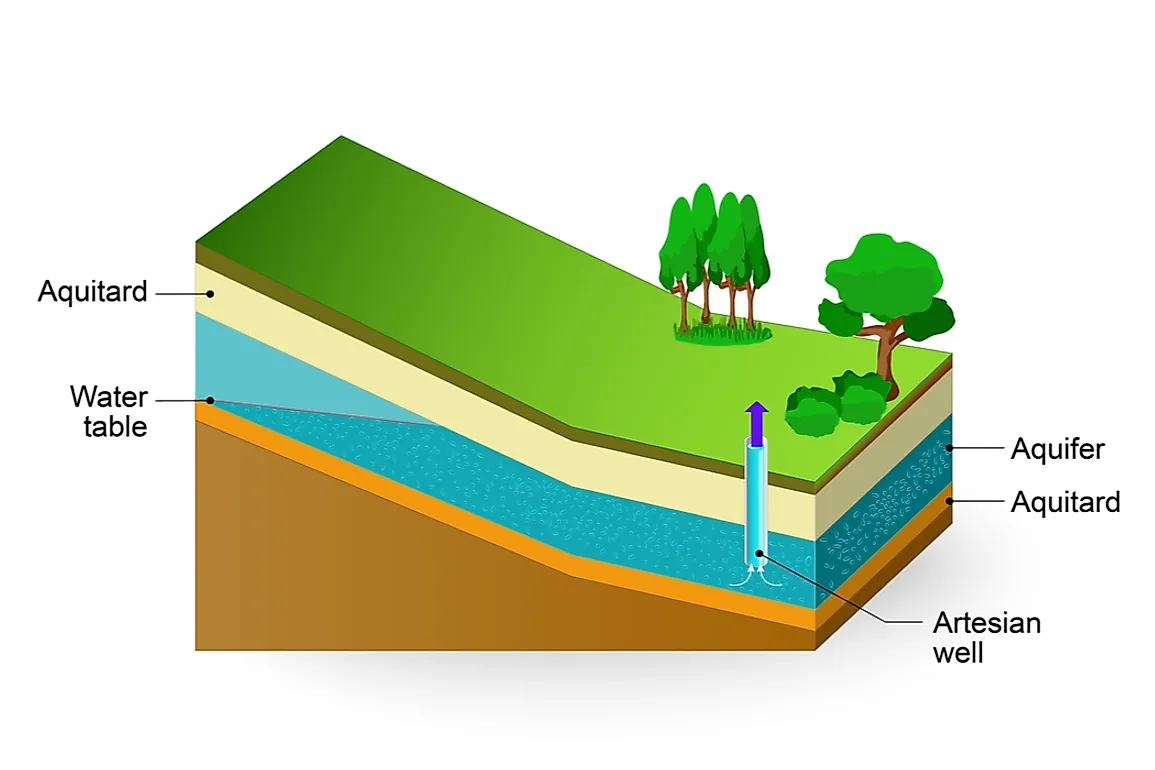Aquifers
An aquifer is an underground layer of water-bearing permeable rock, sediment, or soil. Aquifers can be found in all types of geologic formations and are used for numerous activities such as drinking water supply, irrigation, and industrial use. Aquifers are vital to the sustenance of life on earth.
Types and Characteristics
There are two main types of aquifers: Unconfined and Confined. Unconfined aquifers occur when there is a direct connection between the surface water above ground level and the subsurface groundwater below it. This type is also referred to as a “water table” aquifer because its upper boundary is defined by the position of the water table at any given location in time (seasonally). In contrast to unconfined aquifers, confined aquifers exist where there is no direct connection between surface waters aboveground level and subsurface groundwater below it due to impermeable layers that separate them from each other – typically clay or shale deposits. These layers put pressure on the underlying saturated zone which results in higher pressures than those observed in unconfined systems; this phenomenon is known as artesian pressure (or artesian flow). As such, these systems may have greater storage capacity for recharge/discharge cycles than their counterparts with lower pressures (unconfined systems).
Aquifer Recharge/Discharge Cycles
Recharge occurs when precipitation infiltrates through soils into underlying sediments or rocks where it then percolates downward until it reaches either an impermeable layer separating two different bodies of water or until it reaches an area with lower hydraulic head causing discharge upwards towards streams or lakes – this process ultimately replenishes local groundwater supplies thus making them available for extraction by humans via wells drilled into these geological structures during times when natural recharge rates cannot meet demand needs leading to depletion over time if not managed carefully. Discharge happens when stored amounts exceed infiltration rates due to overdrafting resulting in contamination problems downstream from over-extraction areas if not monitored closely enough since pollutants tend to move faster through highly conductive channels like rivers compared with frozen tundras etc…
Management & Conservation Strategies
Groundwater management strategies include monitoring well levels regularly so that declining trends can be identified early before significant damage has been done; artificial recharge techniques involving injection wells installed near existing sources so that contaminated fluids can be treated prior entering back into circulation; adoption of best practices related land use planning aimed at protecting critical source areas from pollution runoff (agricultural fields etc..); education campaigns targeting farmers about proper fertilization application methods preventing nitrate leaching; implementation of sustainable pumping regimes based on long term estimates regarding expected demand vs actual resource availability taking climate change predictions into account too amongst other measures meant ensure continuous access while preserving overall quality standards across different regions simultaneously without compromising future generations’ rights either!


